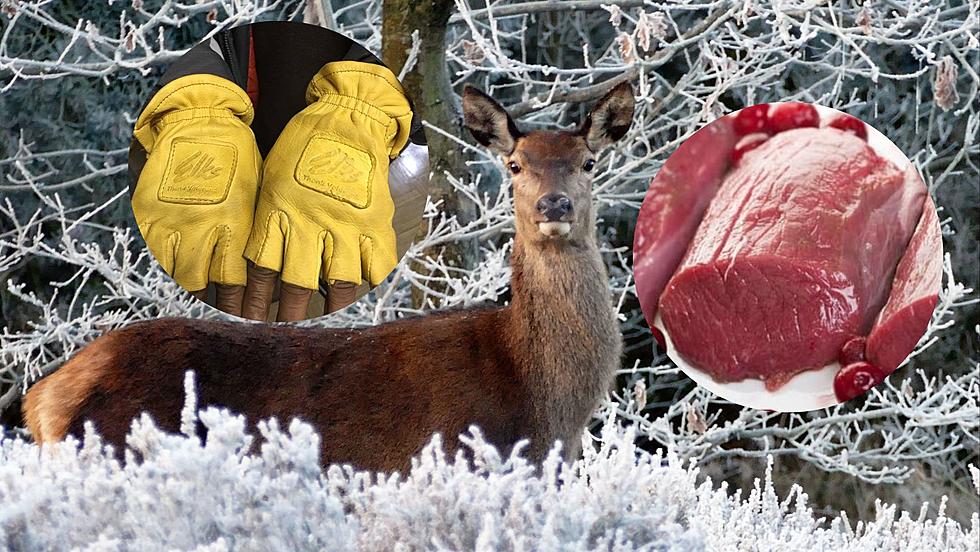
Iowa Programs Using Donated Deer to Quash Food Insecurity and Make Gloves for Veterans
Avid hunters often end up with quite a bit of meat this time of the year. Deer season is open, the holiday season is upon us, and now is the time when recreation and conservation can meet the needs of those who are food insecure and give back to our local veterans. Deer numbers are currently stable to slightly increasing according to the Iowa DNR, so there should be plenty of harvest opportunities this season.
Want to hunt, but don't want or need the meat? Don't fret! Did you know that there are two programs available in Iowa that can take care of your entire deer for you? The first is Iowa's HUSH program. HUSH stands for "Help Us Stop Hunger," which provides a good protein source for those families in need. The second is the Elks' Association's Veterans Leather Program which uses deer hides to provide a service to disabled veterans.
Randy Goodwin skins deer that have been donated to the Help Us Stop Hunger (HUSH) program at the State Center Locker December 11, 2007 in State Center, Iowa. The HUSH program encourages hunters to donate their deer to feed needy individuals through soup kitchens and food pantries.
What is Iowa's Help Us Stop Hunger or HUSH Program?
Randy Goodwin (L) skins deer that have been donated to the Help Us Stop Hunger (HUSH) program at the State Center Locker as co-worker Kevin Metzger sharpens his knife December 11, 2007 in State Center, Iowa.
The HUSH program is a collaborative effort among Iowa deer hunters, the Food Bank of Iowa, meat processors, and the Iowa Department of Natural Resources that is dedicated to two key objectives:
- HUSH strives to curtail the Iowa deer population; while...
- providing essential protein to those in need.
During the 2022 hunting season, hunters generously donated 3,250 deer, translating to an impressive 530,000 meals for Iowa's less fortunate. Wow! Those are some huge numbers. This effort fosters responsible hunting practices and exhibits the power of community engagement. HUSH's success underscores the positive impact achievable when area hunters unite for a shared goal. Reminder, hunters must be properly licensed to hunt deer. That being said, all deer licenses include a $1 per deer surcharge to fund the HUSH program. Participating lockers skin, bone, and grind the meat into two-pound packages of pure venison without any cost to the hunter. Local social service agencies then distribute the venison to needy Iowa families in the area. Curious about your area HUSH Lockers? Check out the list below or follow this link.
How can my deer help Veterans through the Elk Lodge?
Well, you've already donated the meat to the HUSH program so why not find a use for the hide as well? That's exactly what the Elks Veterans Service Commission does. This initiative not only brings joy and friendship to patients but also equips them with new skills for therapeutic purposes. Relying on the generosity of hunters nationwide, the program transforms donated deer hides into leather used for crafting professionally made gloves for veterans in wheelchairs. These gloves are then distributed at adaptive sports clinics across the country and serve as a practical tool and an instrument of care.
Thousands of dedicated Elks volunteers contribute their time, energy, and skills, transforming your donated deer hides into positive change for those who have served. Hides can be dropped off at local Elk Lodges. Find your local lodge here. Even if your deer was deemed unfit for consumption due to CWD (Chronic Wasting Disease), the hides can always be donated and used in this Elks program.
States with the most registered hunters
Gallery Credit: Meagan Drillinger
LOOK: 20 photos of shipwrecks from WWI and WWII
Gallery Credit: Elias Sorich
More From Q98.5









